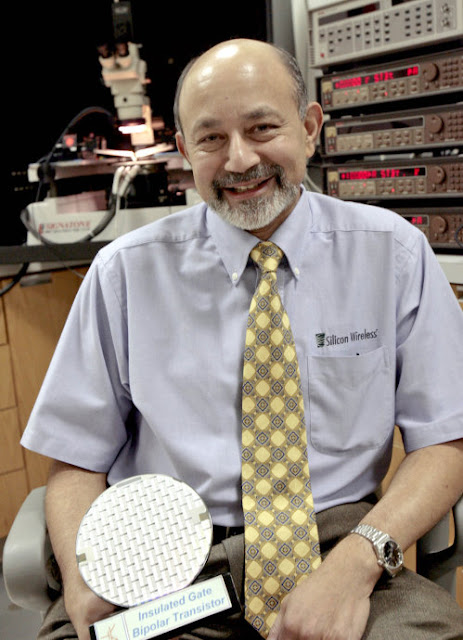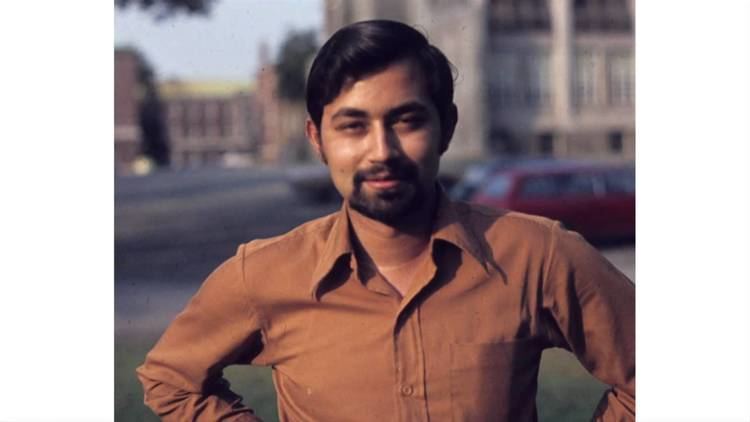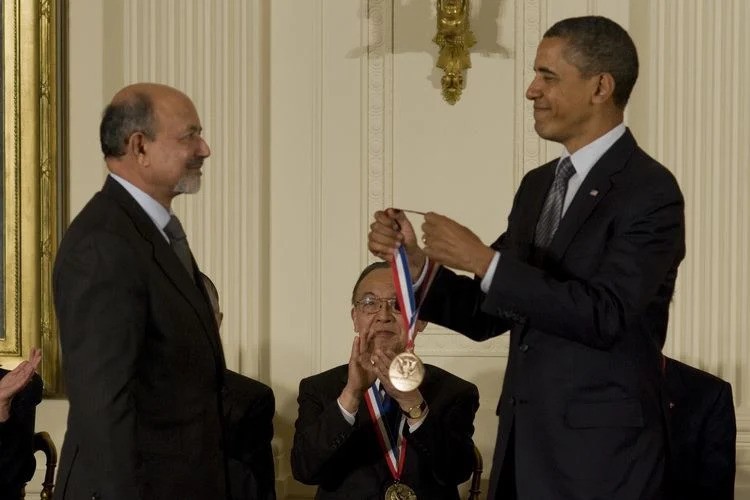(March 19, 2024) The first TV broadcast into a home in India occurred in his house. So, it is quite natural for people to presume that Dr. B. Jayant Baliga would focus on computers in the future. However, the scientist created something that combined two related fields: electronics engineering and electrical engineering. This invention was the IGBT (Insulated Gate Bipolar Transistor), a type of switch similar to those found in homes. However, Dr. Baliga’s version is incredibly small, can switch on and off 100,000 times per second, and can handle very high voltage power.

Known as one of the most brilliant minds in the sphere of electrical engineering, the scholar is also a recipient of the Global Energy Prize, 2015 for the invention, development, and commercialisation of IGBT, which is one of the most important innovations for the control and distribution of energy. “Recently I was inducted into the Inventor’s Hall of Fame and they declared me as the man with the ‘largest negative carbon footprint’ due to the impact of IGBTs on the energy systems and power electronics. Each of these is special in their own right. This latest one credits me as the sole inventor of IGBTs, and hence it is special,” Dr. Baliga shared in an interview.
The scientist’s most famous invention is used worldwide in various applications such as air conditioning systems, household appliances like dishwashers, mixers, and refrigerators, factory automation including robotics, medical equipment like CAT scanners and uninterruptible power supplies, public electric transport and hybrid cars, engine control systems, vehicle electronics, as well as in mobile phones, laptops, and server CPUs.
Born for science
Born in Madras, India, in 1948, Dr. Jayant Baliga grew up in various cities. His father Bantwal Vittal Manjunath Baliga, was one of India’s first electrical engineers in the days before independence and founding President of the Indian branch of the Institute of Radio Engineers, which later became the IEEE in India. Remembering the time when the first Indian TV was broadcast from his house, the scientist shared, “My father, was chief engineer of All India Radio after Independence. There was an exhibition in Delhi in the 1950s where they were using All India Radio’s setup of a camera and a transmitter to show a TV telecast within the exhibition premises. My father wanted to test if the signal could be received at a farther distance.” He had a television set installed at his house at Teen Murti Marg. “It caused quite a sensation in the neighbourhood,” he added.

A young Dr. Jayant Baliga soon after shifting to the USA
This experience pushed him to pursue a career in engineering, and after completing his school, the scientist enrolled at the Indian Institute of Technology (Madras), for a bachelor’s degree in electrical engineering. Speaking about his experience at the institute, the scientist said, “IIT is a phenomenal place to give you a foundation, where you are given a broad coverage of topics in every branch. Back in my time, there were no electives, and every batch had to go through a compulsory set of courses. But they were so chosen that we received an all-round training in materials, electronics, maths, physics, chemistry, etc. And this really helps when you work in research by enabling you to think in an interdisciplinary way. So, this helped me a lot when I went to the US.”
ALSO READ | Dr. Kaushik Rajashekara is working on futuristic machines
The scientist has always credited the institute for his success in the field. And thus, years later, he made some significant donations to IIT, Madras. “IIT Madras is always a special place and has helped me greatly. To give back to it, I have donated it to the institute to give scholarships to students from the money I received along with the Global Energy Prize and other such prizes,” he said.

After his graduation, Dr. Jayant Baliga moved to the United States of America to pursue higher studies. Interestingly, the scientist had trouble getting financial aid while pursuing his graduate studies and was very apprehensive about his abilities to cope with the academic rigours in the USA. “I ended up proving them wrong by scoring a perfect 4.0 GPA and getting the best Ph.D. medal from the Rensselaer Polytechnic Institute in New York City.
The genius
From 1974 to 1988, Dr. Baliga conducted several research projects at General Electric’s R&D Center in Schenectady, New York. Leading a team of 40 scientists, they focused on power semiconductors and high-voltage integrated circuits. At that time, the transistor, which is essential for computers, had already been discovered and put into use. Dr. Baliga aimed to create a semiconductor device capable of controlling heavy-duty equipment such as compact fluorescent lights, air conditioners, and electric motors.
During that period, companies such as GE and Westinghouse were advancing their bipolar transistors for high-power applications. Meanwhile, another group, spearheaded by Siliconix and International Rectifier, was working on a different type of transistor known as the power MOSFET. And it was the scientist who thought of combining the physics of the two. “There was a vice president in GE who was developing a heat pump for air-conditioning applications. He was frustrated that the exiting transistors were failing and that the circuit needed to drive the motor pump was too big, expensive, and very cumbersome to assemble,” the Global Indian said.
ALSO READ | Meet the Gordon Prize winner, Indian-American scholar Dr. Azad Madni
The legend
The scientist is single-handedly responsible for cost savings of over $15 trillion for consumers. “Because of the IGBT the world has not had to build at least 600 hydroelectric dams of the size of the Hoover Dam in Nevada,” shared the scientist. His contributions in the field have won him many recognitions including the 1991 IEEE Newell Award, 1993 IEEE Morris N Liebmann Memorial Award, 1998 IEEE JJ Ebers Award, and 1999 IEEE Lamme Medal. In 2011, the scientist was awarded the National Medal of Technology and Innovation, the highest award for an engineer in the USA by US President Barack Obama.

“Something I never dreamt of as an immigrant coming here with, as I said, about eight dollars in my pocket and a suitcase. To end up in the White House with the President honouring you is just incredible. Unfortunately, my parents were not alive when that happened. And also the IEEE Medal of Honor, for example, that’s much later, 2014. They passed away in the 1990s,” the scientist expressed.
Currently serving as the Distinguished University Professor of Electrical Engineering and founding director of NC State University’s Power Semiconductor Research Center, Dr. Baliga is also the founder of three companies, that aim to license and commercialise his inventions: Giant Semiconductor Corporation, Micro-Ohm Corporation, Silicon Wireless Corporation (later renamed to Silicon Semiconductor Corporation).
- Follow Dr. B. Jayant Baliga on his blog




